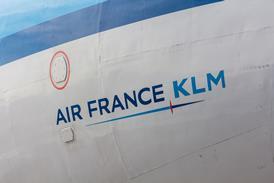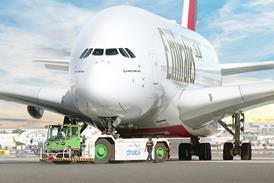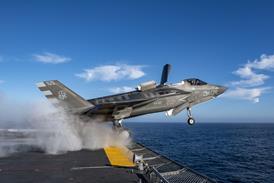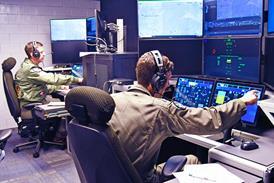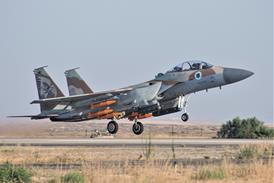Investigation into Irish Sea helicopter crash continues as recorder fails to provide evidence of mechanical problem
Initial readings from the flight data recorder (FDR) in the Eurocopter AS365N Dauphin that crashed into the Irish Sea on 27 December, killing all seven people on board, indicate there was nothing technically wrong with the helicopter when it hit the water, according to a UK Air Accidents Investigation Branch (AAIB) special bulletin.
The AAIB, which has successfully downloaded the aircraft's combined FDR/cockpit voice recorder and recovered 90% of the wreckage, says the full inspector's inquiry into the accident continues.
The AAIB says the CHC Scotia helicopter had taken off from Blackpool, north-west England, to serve offshore gas platforms in Morecambe Bay. When the accident happened at 18:30, the aircraft was flying from the Millom West rig to the North Morecambe platform at 500ft (150m) above sea level on its third sector of the evening.
The first officer was the pilot flying, and the visibility, at a reported 3-5km (1.6-2.7nm) in rain, was marginal according to UK Civil Aviation Authority regulations for operations of this type at night, says the bulletin. When approaching the North Morecambe platform, the aircraft "slowly pitched nose down and commenced a slow roll to the right. At the same time the collective lever was raised, increasing power from the engines, and the indicated airspeed (IAS) and attitude began to increase."
The crew decided to go around, says the bulletin, but the helicopter "continued to roll right and pitch down", and the co-pilot asked for assistance. The captain took control a second before the aircraft reached a right bank of 38º, with the nose-down pitch simultaneously reaching 38º. Airspeed was increasing through 80kt (148km/h) and the aircraft was descending at 1,400ft/min (7.1m/s) through 300ft on the radio altimeter.
|
US accident may lead to compulsory HTAWS On 23 March 2004, an Era Aviation Sikorsky S-76A crashed in the Gulf of Mexico with two pilots and eight passengers on board on a night flight to an oil-drilling ship. The US National Transportation Board determined that the aircraft descended into the sea because of "the crew's failure to identify and arrest the aircraft's descent for undetermined reasons that resulted in controlled flight into the water". Everybody on board was killed. Night visual meteorological conditions prevailed, reports the NTSB, adding that if the aircraft had been fitted with helicopter terrain awareness and warning system (HTAWS), the crew would have had adequate warning of the aircraft's descent, which was clearly inadvertent. The US Federal Aviation Administration says it is in the process of formulating specifications for an HTAWS that it may well mandate for helicopters carrying six or more passengers. In Europe, the Joint Aviation Authorities requires any transport helicopter that operates offshore by 5.5km (3nm) or more to be fitted with a radio altimeter-linked automatic voice alerting device (AVAD), that provides pilots with a voice warning at a height of 100ft (30m), and at any other height set by the pilots using a bug system. AVAD was mandated by the UK CAA following the 1983 British Airways Sikorsky S-61 crash, which killed 20 people off the Scilly Isles. |
|---|
The investigators say that in the next 2.5s the helicopter rolled level and the pitch reduced to 13º nose-down, but airspeed was still rising and the rate of descent remained the same. "The last recorded parameters indicate a radio altitude of 30ft, a 12º nose-down pitch, IAS at 126kt and a 20º bank angle to the right," says the bulletin.
The bulletin does not mention the "100ft" call that should have come from the Dauphin's automatic voice alerting device, but the AAIB says: "A review of the recorded data has not indicated any problems of a technical nature and no helicopter manoeuvres have been identified that were not in response to flight-control inputs."
Source: Flight International


